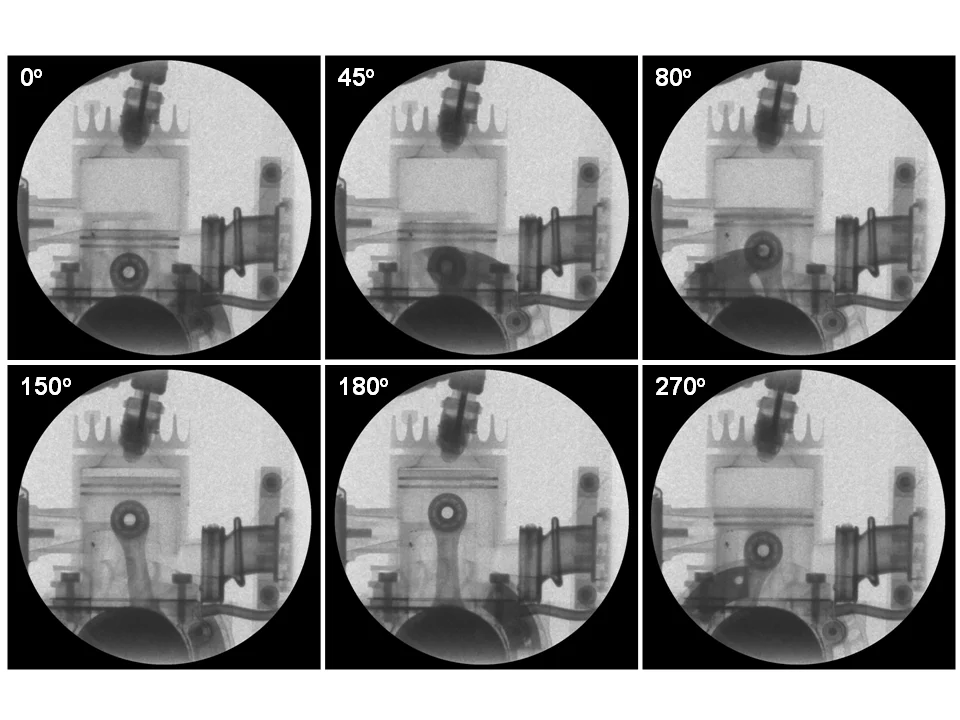Still, the majority of motors are based on combustion engines. Therefore the potential for optimization of the combustion process towards higher fuel efficiency and pollution reduction must be exploited intensively. The dynamic neutron radiography (dNR) method can certainly contribute to this task because the engine structure (mostly Al or Mg) is relatively transparent for neutrons, allowing insight into the interior and additionally the hydrogen contents in fuel or lubricants provides still more contrast for neutrons even in thin layers.
For the dynamic measurements the detector has to be synchronized with the running motor. A trigger method is required as the engine fires unevenly while it is running at idle. Technically, the image acquisition is synchronized by a trigger signal taken from the ignition process using an inductive sensor or by an angular transmitter taking the crank angle position. As the running process is cyclic, several radiographic images acquired at the same cycle position were cumulated into a single frame for the movie. The exposure time of a single image was 50 µs. This provides an angular resolution of the crankshaft position of 1 degree at 3000 rpm (revolutions per minute) and 3.3 degree at 8000 rpm, respectively. An individual image for a certain piston position is then composed of 1000 single images. By giving a delay to the camera trigger signal a movie can be recorded. For the measurements the spatial resolution of the detector system was about 100 µm.
For the dynamic measurements the detector has to be synchronized with the running motor. A trigger method is required as the engine fires unevenly while it is running at idle. Technically, the image acquisition is synchronized by a trigger signal taken from the ignition process using an inductive sensor or by an angular transmitter taking the crank angle position. As the running process is cyclic, several radiographic images acquired at the same cycle position were cumulated into a single frame for the movie. The exposure time of a single image was 50 µs. This provides an angular resolution of the crankshaft position of 1 degree at 3000 rpm (revolutions per minute) and 3.3 degree at 8000 rpm, respectively. An individual image for a certain piston position is then composed of 1000 single images. By giving a delay to the camera trigger signal a movie can be recorded. For the measurements the spatial resolution of the detector system was about 100 µm.
Movie: Dynamic neutron radiography measurement of a two-stroke engine running fired at 8000 rpm. The frames show different crankshaft position of a fully recorded rotation. The exposure time of a single raw image was 50 µs providing an angular resolution of the crankshaft position of about 3 degrees. Each frame is composed of 1000 single raw images.
Reference
Visualization of a Fired Two-Stroke Chain Saw Engine Running at Idle Speed by Dynamic Neutron Radiography.
C. Grünzweig, et al.
SAE Technical Paper 2010-32-0013; (2010).
DOI: 10.4271/2010-32-0013
C. Grünzweig, et al.
SAE Technical Paper 2010-32-0013; (2010).
DOI: 10.4271/2010-32-0013


